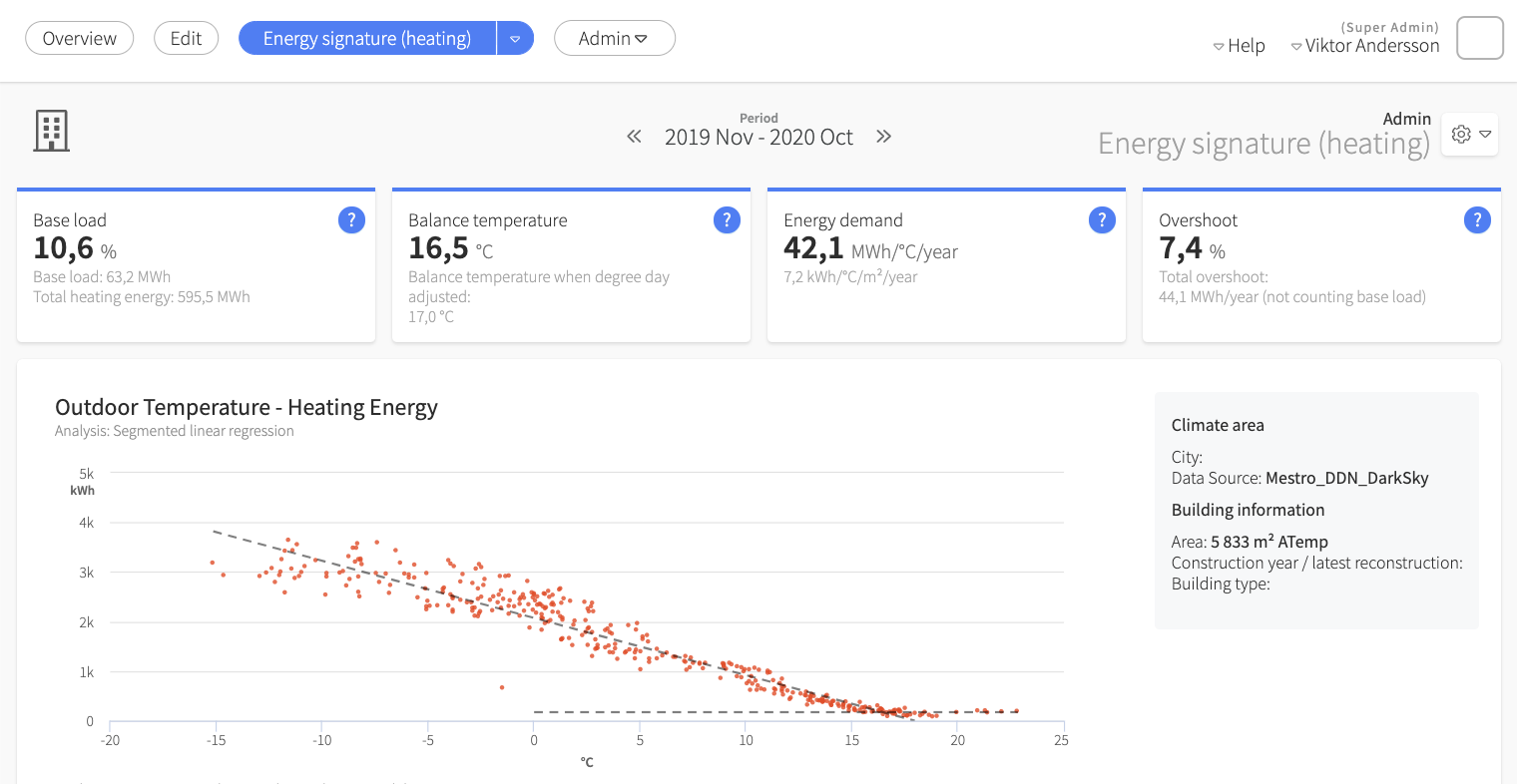An analytical tool designed to keep track of the energy needed to heat your property while simultaneously identifying the savings potential
There is no questioning that you want to save energy, it simply benefits your wallet and the environment. Knowing when there's energy to save on the other hand, well, that is a different matter. It turns out that the savings potential when heating properties is substantial. Let's take a look at how you can do this analysis in Mestro Portal!
We developed the Energy Signature for users wanting to become experts on their properties' heat consumption, the inherent savings potential, and last but not least where efforts should be directed to the greatest benefit!
The Analytical Tool
The report consists of two graphs. The top one shows a linear regression model of the property's heat energy usage as a function of outdoor temperature at a specific point in time.

What does this mean?
It means that we can see how much energy is used to heat the property at a specific outdoor temperature. Each red dot in the graph represents one such point in time. Optimal heating of the property means that all red dots are positioned as close to the diagonal line as possible.
As the outdoor temperature increases, the amount of heating energy required in your property naturally decreases. At a certain point, the property reaches the so-called balance temperature, beyond which no heating is theoretically required. In the graph, this occurs when the diagonal line intersects the horizontal one. The energy consumed at this stage is solely for heating the incoming water supply to the property. This energy is represented by the dots located around the horizontal line, this is the base load of the property.
How do I estimate the amount of energy that can be saved?
As mentioned above, the red dots represent the amount of energy used to heat your property. An indicator of efficient energy consumption is a linear relationship between energy usage and outdoor temperature. In other words, the tighter the red dots hug the diagonal line, the better your property withstands changes in external temperature. Potential energy savings are therefore indicated by the dots located above the lines in the graph.
But how do I know when this energy could be saved?
The lower graph contains three different lines for us to explore. These are heating energy (red line), outdoor temperature (the blue field), and savings potential at each point in time (the green line). By studying the green line, you can quickly identify the days when your property used too much heating energy and in what quantities.

How should I use this information to improve my energy saving?
The greater the distance between red dots and lines in the first graph, the poorer your property is able to withstand outdoor temperature changes. A great starting point in making your property more resilient is to study the dots farthest away from the regression line. How does your property behave during these weekdays? We recommend that you use the Usage Analysis tool to study the heating energy used by the hour during those days, and those before and after.
Pro Tip: An estimated savings potential is summarized in the widget in the upper right-hand corner!
One possible reason that a property requires a lot of heat energy is low thermal inertia. Simply speaking, the building materials have a limited capacity to store heat energy. Poorly insulated climate building shells or suboptimal roofs also contribute to low inertia. Depending on the property's age, investments in new, more efficient technological installments may be required. It goes without saying that it is a good idea to check so that heating and cooling systems aren't run simultaneously. Ensuring this usually entails configuring a temperature buffer between the two systems when none of them are in use.
Finally…
As you can see, there are several ways to save heat energy. A suitable first step on your energy efficiency journey is to identify your property's savings potential, and investigate on which time periods in a year that you should focus your efforts to realize it.
We wish you the very best in reaching your energy efficiency goals!
Best regards,
Team Mestro 🦸♀️🦸♂️
One last thing! We are a company in constant development and welcome your concrete opinions and feedback. Do you miss something or could a feature work better? Contact your Customer Success Manager or support@mestro.com . We would truly appreciate your feedback on how to make Mestro even more useful to you!
